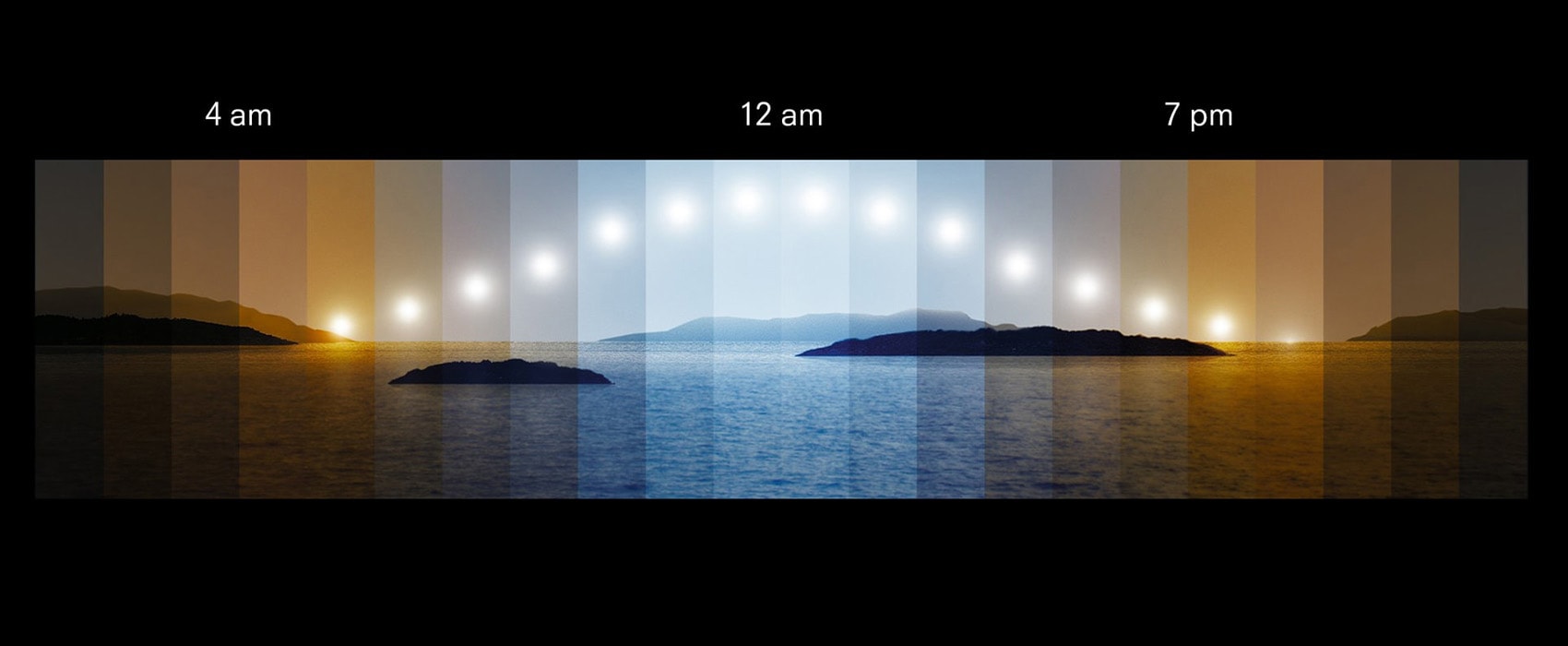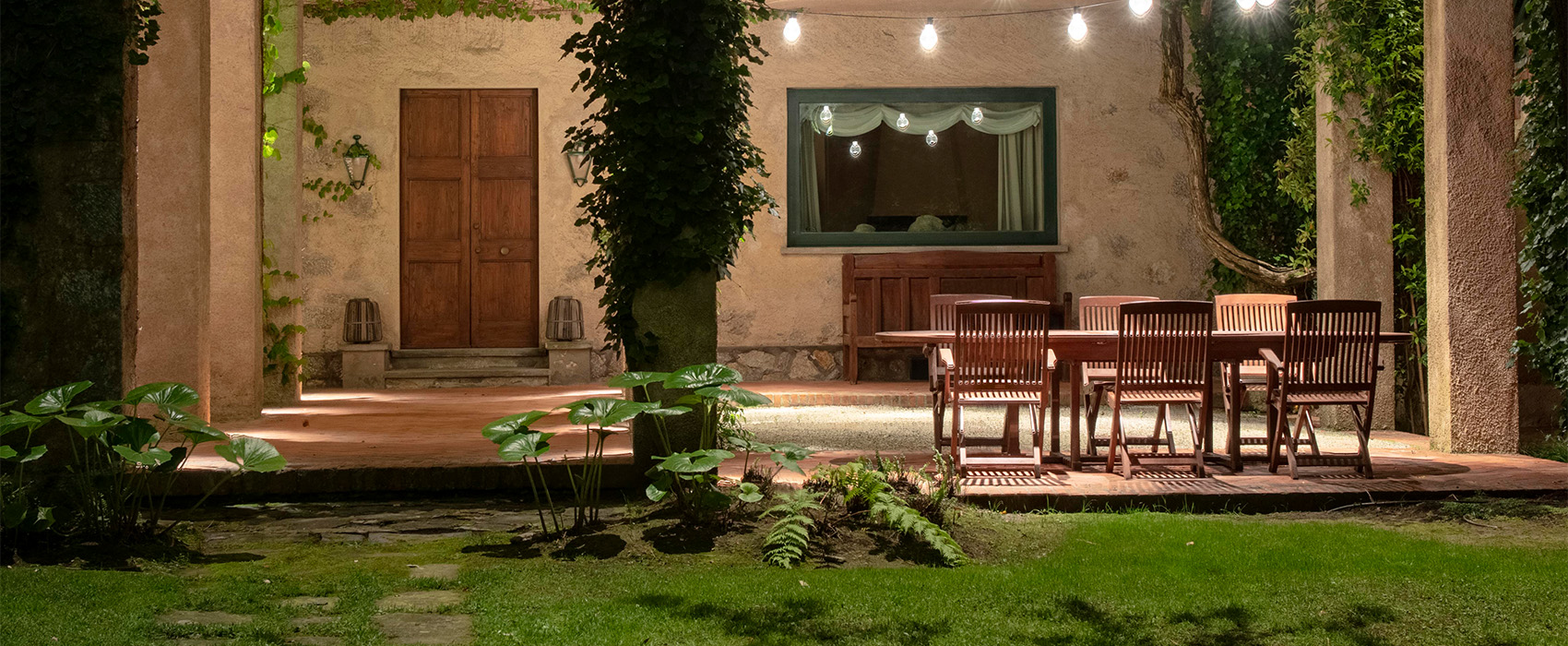“It doesn’t just make things visible, it also meets people’s needs, it enriches space perception, it creates emotions”
Organic light is an expression we have come up with to describe solutions that can make artificial light act like natural light. In this article, we try to outline its design features, objectives and the relationship with a person’s well-being.
What is meant by organic light?
Organic light is a new conception of lighting inspired by nature, it improves people’s lighting experience by making artificial light act like natural light. For years, lighting engineering focused on technological performance, often neglecting spatial quality and human well-being. Nowadays a new sensitivity is developing and our job consists in thinking about light not only in terms of efficiency but especially in how it can improve daily life. Light cannot limit itself to render things visible, it has to meet people’s needs, enrich space perception, create emotions.

What is the link between artificial light and personal well-being?
It is important to remember that, as living beings, our bodies and minds are affected by the sunlight. This relation underlies countless biological processes that regulate life. Artificial light is capable of deeply altering this link, an example being disturbances related to blue light emissions from electronic devices. Our relationship with the sun also creates a different kind of sensitivity, which does not have direct biological effects but it is just as powerful, the warm light of a sunset and the cold light before a thunderstorm are experiences that have been part of our life since birth and that generate specific emotions. Any lighting that does not consider these aspects creates a misalignment between the natural and artificial environment, adversely affecting our lives.
How do we work to improve these aspects?
Project sensitivity is always the most important element to find the right solution for the context we are considering while the rest of the work is based on the knowledge of the tools. The evolution of technology gives the lighting designer an expressive freedom that was previously unthinkable. Nowadays, light can be an organic and dynamic element, the most developed LED light sources and home automation systems give the possibility to control shadows, brightness and colour temperature with extreme precision, making the artificial light look like natural light.

How is the living environment designed?
In our homes, as well as in hospitality and wellness facilities, a light which is adjustable, blendable with natural light and adaptable to every person’s biorhythm brings many benefits to the psychophysical wellbeing. It has been proven that the exposure to an inadequate artificial lighting can alter our circadian rhythm, which also regulates the production of hormones such as melatonin and serotonin, having repercussions on people’s health. A dynamic lighting can be designed to create optimal conditions according to the time and the activities taking place, as well as the amount of natural light in an exact moment. In the past, in the hospitality sector, light was considered part of the decoration and quality was communicated through the design. However, nowadays the possibility to have lighting scenes based on a chosen atmosphere is more appreciated, both in the private rooms and in the common areas. This industry is approaching a different sensibility as well, light is a tool used to accompany the individual and not an object to put on display.
Can organic light also be used in other fields?
An organic approach to lighting can be applied to every project. For instance, in the art field the lighting used has always been set on a single white gradient, while works of art have been designed to be viewed from dawn to dusk and, in the past, even by candlelight, through the many shades of natural light. The relation between light and artwork has always been the central part of the artistic production and it is wrong to think that a single type of light could fulfil this function. Therefore, every work of art needs to be exhibited in different lighting in order to be fully enjoyed. In outdoor lighting, the main objective is to always let nature be the protagonist and the moonlight is certainly the main inspiration, often balanced by a very warm lighting recalling fire. The same reasoning used for houses can be adapted to workplaces, with the intent of reducing stress and fatigue levels.

The future of organic light
The novelty introduced by organic light is the close relationship between the individual, nature and artificial lighting, the most important aspect being the ability to be adapted, considering both the context and any needs. If research in the artificial intelligence field goes any further, these devices will be able to understand people’s habits within their own houses, as well as to analyse their behaviour in museums, offices and public places. In the future, lighting will have the capacity to regulate itself by analysing large amount of data provided by both the outdoor environment and the people indoors. If technologies of this kind will be developed, we will be able to design lighting scenes that suit every individual, aiming to reduce stress in the workplace, to contribute to relaxation inside the house or to facilitate the fruition of museums and public places.
